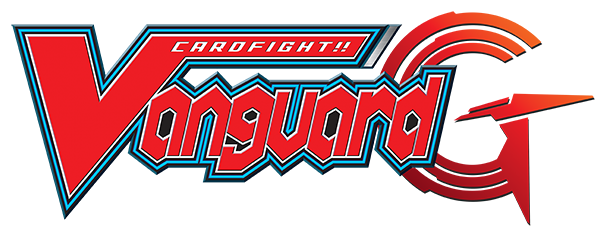 Are you interested in strides, but not the absurd power scaling of modern card design? Do you want to play a game where numbers were simple and there was no Overtrigger? Perhaps consider checking out G-era Vanguard! Akin to the likes of YuGiOh's GOAT format, or Pokemon's many legacy formats, G-Vanguard attempts to rewind the clock and go back to a time in the game's history that some consider "the good old days". This project is an attempt to not only archive and maintain records of the game as it was back then, but also to provide a resource to players who are interested in trying something new, yet old at the same time.
Are you interested in strides, but not the absurd power scaling of modern card design? Do you want to play a game where numbers were simple and there was no Overtrigger? Perhaps consider checking out G-era Vanguard! Akin to the likes of YuGiOh's GOAT format, or Pokemon's many legacy formats, G-Vanguard attempts to rewind the clock and go back to a time in the game's history that some consider "the good old days". This project is an attempt to not only archive and maintain records of the game as it was back then, but also to provide a resource to players who are interested in trying something new, yet old at the same time.
A few select members of the Vanguard community have come together to form a "committee" of sorts to help guide players into discovering G-era, be it for the first time or rediscovering after nostalgia. Our aim is to help foster and develop an alternative way to enjoy older cards from Vanguard's past.
 In the summer of 2018, Vanguard went through a reboot, and we entered what is now called V-era. Up until this point, the entire game was just "Cardfight Vanguard". We had Limit Break and Legion, but until then it was all still just "Cardfight Vanguard". Strides added a "G" onto the end, but there still wasn't any sense of "format" - the entire cardpool was just the entire cardpool. Cardfight Vanguard G and Strides were introduced in late 2014 for Japan and early 2015 for English. From there, the game had its ups and downs, but was overall mostly healthy and enjoyable. With a few minor exceptions that were dealt with fairly quickly, there was no big major problem or anything hugely upsetting for game balance. Some decks were far better than others for much longer, but there was significantly more room for player expression and individuality.
In the summer of 2018, Vanguard went through a reboot, and we entered what is now called V-era. Up until this point, the entire game was just "Cardfight Vanguard". We had Limit Break and Legion, but until then it was all still just "Cardfight Vanguard". Strides added a "G" onto the end, but there still wasn't any sense of "format" - the entire cardpool was just the entire cardpool. Cardfight Vanguard G and Strides were introduced in late 2014 for Japan and early 2015 for English. From there, the game had its ups and downs, but was overall mostly healthy and enjoyable. With a few minor exceptions that were dealt with fairly quickly, there was no big major problem or anything hugely upsetting for game balance. Some decks were far better than others for much longer, but there was significantly more room for player expression and individuality.
Flash forward to 2022, and we're already comfortably into the Overdress season (referred to as D era). While D gets some things right, it also misses the mark in other areas. If you enjoy Standard and D format, great! Keep playing them. But we also know that some issues such as low shield values or the OT can leave a sour taste in people's mouths. Premium comes close to solving these issues (as it's the only format where everyone strides), but it still has a few issues here and there. While G era was definitely not safe from power creep, the impact it had on the game back then were definitely lesser. By revisiting that era, players can both get a sense of nostalgia from a game they remember while also relearning the game given how different it is. And believe us when we say - it really was a different game back then!
In the effort of preserving the history of the game as it was played then, any functional errata from after GCB07 (July 2018) are considered to NOT BE IN EFFECT. Of note, this includes erratas for the "persona crits" (e.g. Dragon Knight Jannat), "resource heals" (e.g. Dragon Dancer, Tara), all the first strides clans had access to (e.g. Divine Dragon Knight Mahmud), Harmonics Messiah, and various Cray Elemental units.
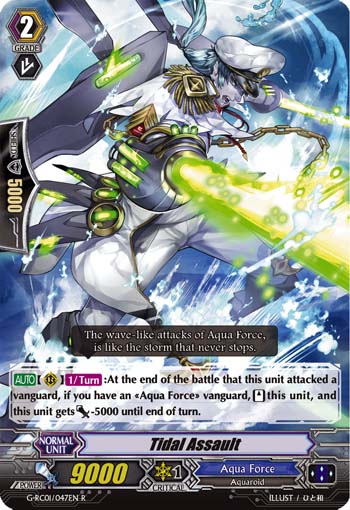 The main change is how striding works. Modern stride rules allow you to stride if you started the turn with a Grade 3 vanguard. This was implemented to combat a few specific decks and strategies that would stay on Grade 1 and prevented your opponent from striding or using Sebreeze
The main change is how striding works. Modern stride rules allow you to stride if you started the turn with a Grade 3 vanguard. This was implemented to combat a few specific decks and strategies that would stay on Grade 1 and prevented your opponent from striding or using Sebreeze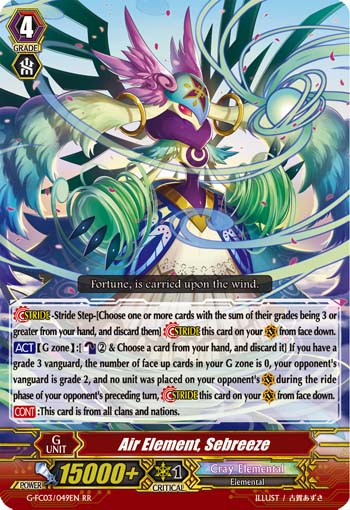 , thus locking you out of many powerful GB1 effects your deck was built around. Unfortunately, this also allowed for ride-skip strategies to become particularly dominant in Premium. In the interests of playing G-era accurately at the time, we suggest it would be best to play with the old stride rules - players can only stride once both players have a grade 3 vanguard.
, thus locking you out of many powerful GB1 effects your deck was built around. Unfortunately, this also allowed for ride-skip strategies to become particularly dominant in Premium. In the interests of playing G-era accurately at the time, we suggest it would be best to play with the old stride rules - players can only stride once both players have a grade 3 vanguard.
There were also a few other changes to the game rules. One such change was G assist. This only came after the reboot - until V era, when you G assist, you would also have to remove two cards from your G zone from the game along with the two cards from hand. While removing cards from the G zone was a a skill check itself, we feel that it detracts from overall gameplay experience, and so are adopting the new G assist. In a similar manner, we feel that the new mulligan (where you redraw before shuffling) is also overall beneficial to gameplay experience, and so we are adopting that too.
One largely positive change was also the adjustment in how guarding worked. At the time, you were could only guard with cards from hand with grade equal to or lower than your vanguard's grade. Nowadays, there are no restrictions/rules around guarding, so this may take some getting used to. While this change was indeed positive for gameplay, it does affect how some decks were built and played. One notable drawback to going back to this old guarding rule is that you were unable to guard with the wrong G3/G2 from your hand and G assist for the correct ride target. While it is unfortunate when this happens and may detract from some gameplay experience, we believe it was also a core part of the game of the time (such as being a real drawback to some forms of greedy deckbuilding). Another relevant change is that when under the effects of Shiranui "Mukuro", because you no longer had a vanguard, you were unable to guard at all (thus, being unable to fulfill the "grade lower than or equal to your vanguard" clause).
One final change was regarding 1/turn effects - this change actually came into effect shortly before the reboot, but we'll recap for those who are returning to Vanguard after some time away. Previously, if an effect had the [1/turn] marker, the first time you met that condition, the effect activates and resolves and doesn't activate again. Now, any effect with [1/turn], regardless of if it's costed or not, is now optional, and is considered to have not activated unless resolved. As an example, before, the first time Tidal Assault attacked a vanguard, it had to stand. Now, you can attack your opponent's vanguard with Tidal Assault and choose not to use it. If you can then stand it through other means later on in the turn, then the next time it attacks your opponent's vanguard, you will be allowed to use its ability to stand.
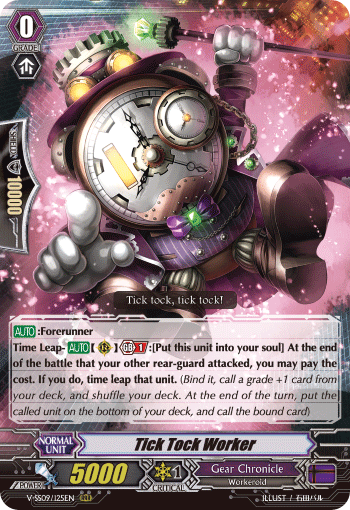 As far as card legality goes, everything up until the release of V-BT01 is considered legal. Thus, the final set of G era was G-CB07 Divas' Festa. All other products before that are considered part of G format.
As far as card legality goes, everything up until the release of V-BT01 is considered legal. Thus, the final set of G era was G-CB07 Divas' Festa. All other products before that are considered part of G format.
Additionally, due to supply/accessibility issues, the following promos were issued after G-CB07's release, but these are also considered to be part of G format:
- Demon Stealth Beast of Tyranny, Mousu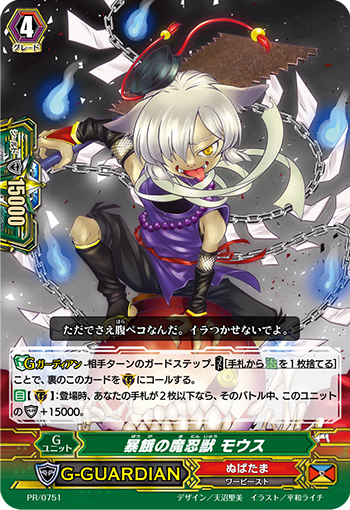
- Bearlock
- Cymbal Monkey
- Pirate King of the Roseate Twilight, Nightrose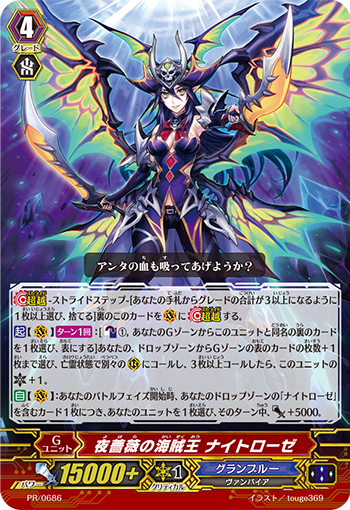
- Masquerade Master, Harri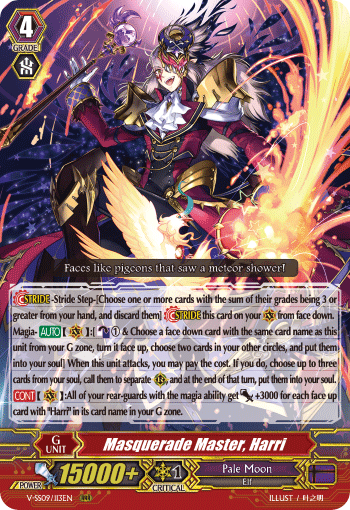
- Dewey the Ghostie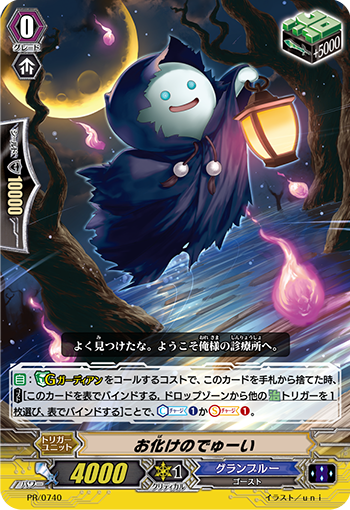
- Hopping Balloon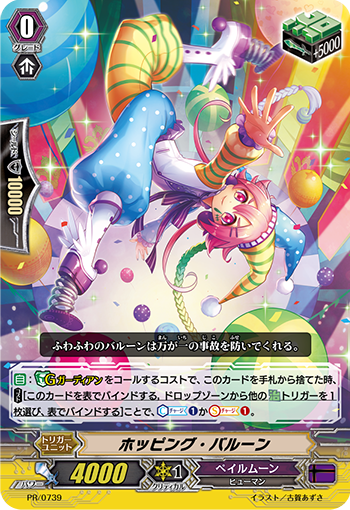
- Fertility Eradicator, Youki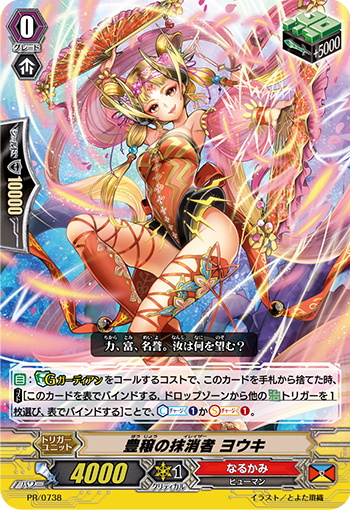
- Battle Sister, Polvoron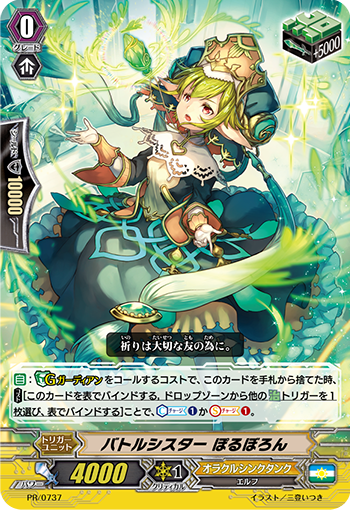
Additionally, any and all reprints of cards otherwise legal but newer than G-CB07 (for example, box topper Dizmel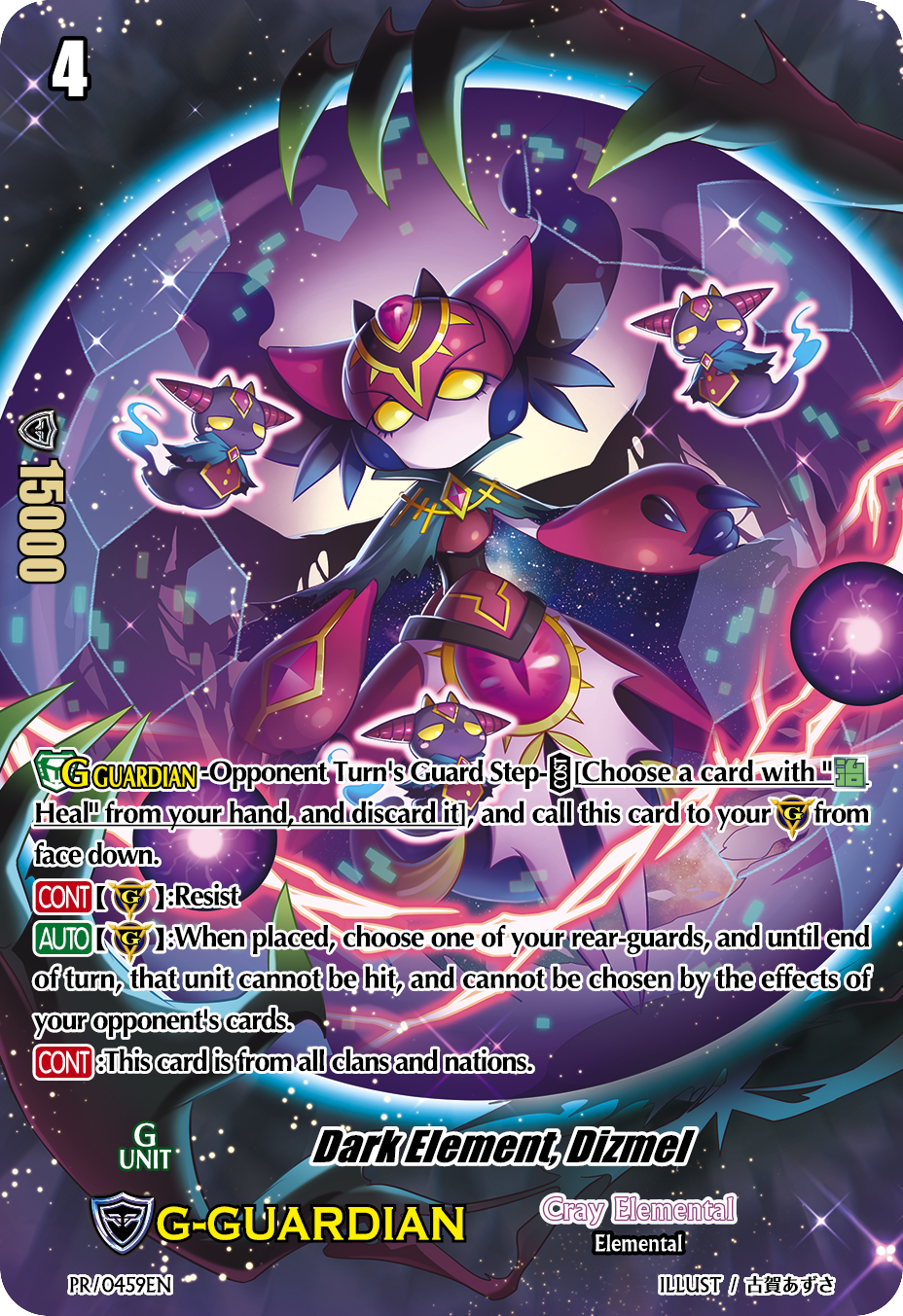 from Premium Collection 2019) are also considered legal for use.
from Premium Collection 2019) are also considered legal for use.
The restriction list was actually much shorter than it is today. There were only a small handful of true problems.
Please click here for the restriction list of the time in its entirety!
Some card restrictions, denoted with * were only in the Japanese version of the game. However, in the interests of unity and balance, we have ported them over as well. This list addresses most of the issues with G format, but there are still a few cards and decks to keep an eye on. As a community-wardened format, we are always open to discussion and suggestion, and while we cannot police or enforce anything, we may also offer suggestions on what an "improved" banlist could be in future.
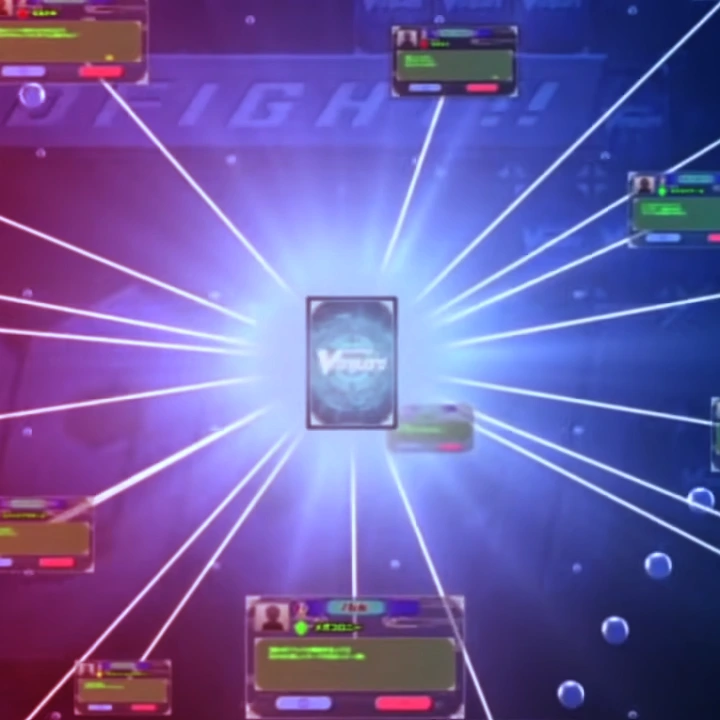 As a show of our passion and support for the format, we also maintain a repository of decks that players can refer to as starting points for getting into G era. These lists are by no means perfect, and should only serve as a guide for people to familiarise themselves with the cardpool of the time. These are also always evolving, so if you think you can do a better job or want to contribute, feel free to reach out and send us some lists - we're more than happy to take a look. The goal is to cover as many decks as possible, regardless of whether or not they were tier 1.
As a show of our passion and support for the format, we also maintain a repository of decks that players can refer to as starting points for getting into G era. These lists are by no means perfect, and should only serve as a guide for people to familiarise themselves with the cardpool of the time. These are also always evolving, so if you think you can do a better job or want to contribute, feel free to reach out and send us some lists - we're more than happy to take a look. The goal is to cover as many decks as possible, regardless of whether or not they were tier 1.
As said, we're just a group of old fogey players who want to recapture our youth and share it with others. If there's any other questions or anything you need, please reach out and get in touch. We hope you give G format a try and perhaps share it with others as a way of not only enjoying Vanguard differently, but as a way of preserving history. Enjoy!
I would also like to add a special thank you to Zystral from YellowCardTCG for helping with all of this info! They and many others are passionate for the G-Format!Please go give them a follow!